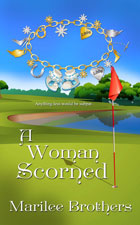Mapping New Territory
If you're one who looks for new adventures in wine tasting, some day
you may walk into a wine store and see some or all of these words:
Blaufrankisch, St. Laurent and Zweigelt. These Austrian reds will reward
you with a sense of adventure! It's just more evidence of the bounty of
interesting, distinctive, world-wide wines ever more available to
consumers.
Burgenland is Austria's second largest wine region, after Lower
Austria. Burgenland huddles against Hungary on the far eastern border.
It is mostly known for its opulent sweet wines, but some remarkable,
assertive reds also come from here. Though decent red wine has a
long-established foundation here, superb red wine is rare and a more
recent phenomenon. Quality improved in the mid-1980s as advanced
winemaking techniques and improved vineyard practices became the
standard by young professionals.
The foremost red grape is blaufrankisch and, when it is good, it can
become a daring wine, suffused with the unusual flavor of raspberries
dusted with white pepper. In texture, the wine's crushed-velvet softness
and juiciness are reminiscent of the best California zinfandels. This
grape variety is known and grown in my home state of Washington as
lemberger. Hungarian growers who first planted it in British Columbia
brought Lemberger to the United States from central Europe in the early
20th century. From there, it was introduced to Washington State in the
early 1940s.
The St. Laurent grape is related to pinot noir. Zweigelt is a cross
between St. Laurent and blaufrankisch. What these three red grapes from
Burgenland have in common is they look dark and smell dark and spicy,
bursting with blueberry and blackberry fruit, as well as some juicy
plums. One would think these are big red wines from the look and the
nose. However, in the mouth they are surprisingly light-bodied. They can
offer tastes of sage, tarragon, and other spices, sometimes along with
some licorice. In addition to having an authentic sense of place, these
wines were made for food. Some foods that you can pair with any of the
three Austrian reds: game, black bread, venison, foie gras pate, rabbit
stew, veal stew, sauerkraut, oily fish, mushrooms, or curried lentils.
Though these are unusual food pairings, the Burgenland reds from Austria
offer unusual tastes, but are very approachable and easy. So keep an
open mind and a sense of adventure in trying any new wine.
Durella DeGrasse,
Certified Wine Professional
Return to Marilee's Washington Wine page

